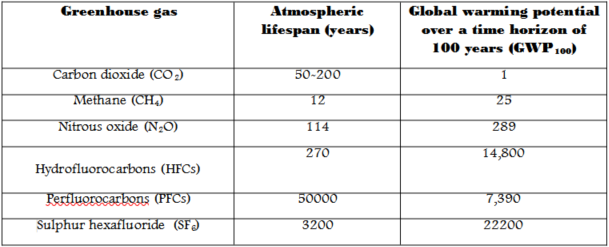Climate and environmental action can be performed in many ways, for example, by choosing a bicycle instead of a car, packing groceries in reusable bags, and choosing plant-based meals. Discussions about how the climate is changing, why and what we can do about it are just as important. The more people act, the more visible the results are!
At this point, to mitigate climate change, everyone must get involved. To understand climate phenomena better and at the same time be able to further raise awareness of people, it is worth knowing the differences between CO2 and CO2e as they are essential in developing our knowledge of greenhouse gases and their impact on global warming.
What are greenhouse gases?
To understand the differences between CO2 and CO2e, we should start by grasping the nature of greenhouse gases – both abbreviations refer to precisely that. Greenhouse gases (GHG, or greenhouse gases) are gases that transmit most of the so-called short-wave radiation reaching the Earth. At the same time, they absorb the so-called long-wave radiation reflected by the surface of our planet. By absorbing long-wave radiation, they contribute to the greenhouse effect, i.e. an increase in the temperature of the Earth’s surface.
The greenhouse effect significantly affects the climate of our planet. If it were not for this phenomenon and the presence of the atmosphere, the temperature of the Earth’s surface would be about -20°C and the ice cap would reach the equator. Meanwhile, it is 33°C higher.
Everything was fine as long as the atmosphere’s composition was balanced. Now, as a result of human activity, the proportions are disturbed. Thus, it is referred to as anthropological greenhouse gas emissions. Increasing their proportion in the atmosphere does not change the short-wave radiation reaching the Earth but makes it more difficult to radiate energy into space. As a result, the temperature rises, contributing to global warming over time.
CO2 isn’t the only greenhouse gas
Wallace Broecker’s article “Climate Change: Are We on the Brink of a Pronounced Global Warming?” published in Science magazine in 1975, is among the first materials concentrated on the subject. Numerous studies, discussions and debates about the impact of global warming eventually led to the signing of the Kyoto Protocol in 1997, an international agreement to combat climate change.
The document distinguishes six greenhouse gases: methane (CH4), nitrous oxide (N2O), hydrofluorocarbons (HFCs), perfluorocarbons (PFCs), sulphur hexafluoride (SF6), and carbon dioxide (CO2).
Water vapour, also a greenhouse gas, was not included in the Kyoto Protocol due to its short lifetime in the atmosphere.
What does CO2 have to do with CO2e?
At the beginning of the article, we mentioned a trip. The case referred to a situation where you have different currencies saved from previous trips, for example, dollars, yen, gold, francs, crowns, and pounds, and then you exchange them for euros. Each of them will have a different value. This is how it works with greenhouse gases, too.
Each GHG has different properties, persists in the atmosphere for various lengths of time, and absorbs different amounts of heat. Hence, a global warming potential (GWP) was developed to quantitatively assess a given gas’s impact on the greenhouse effect.
GWP values for selected substances (according to IPCC 2007 IPCC Fourth Assessment Report (AR4) by Working Group 1 (WG1) and Chapter 2 of that report (Changes in Atmospheric Constituents and in Radiative Forcing)
The global warming potential compares the amount of heat retained by a kilogram of a specific gas to the amount of heat retained by a similar mass of carbon dioxide (that’s why CO2 is 1). GWP is calculated in a particular time horizon, usually 20, 100 or 500 years. The usually adopted time horizon is one hundred years. The global warming potential is expressed as carbon dioxide equivalent (CO2e).
The carbon dioxide equivalent – CO2e – is a universal unit for measuring greenhouse gas emissions, which reflects their different global warming rates. CO2e thus represents the amount of CO2 that would have an equivalent effect on global warming.
In simpler terms, each greenhouse gas is converted to CO2e by multiplying its emissions by a coefficient determining its greenhouse creation potential. For example, 1 ton of methane emissions is expressed as 25 tons of CO2e. One ton of nitrous oxide emitted is almost 300 tons of CO2e, and so on.
CO2e provides a broader view of GHG emissions associated with human activities. It makes it easier to add up carbon dioxide emissions (which is emitted the most, as it comprises 80% of all GHG emissions) and the other GHGs. It is, therefore, a more accurate and detailed method of determining the carbon footprint.
Learn more with TerGo!
You already know the difference between CO2 and CO2e! If you are interested in climate and environmental issues and you are looking for scientific knowledge provided in an accessible way, we encourage you to read TerGo’s blog. If you are concerned or have questions about global warming or climate change, write us a message on Facebook or Instagram!






